Oliver Onions’s ghost stories are as unusual as his name. Indeed he is unique in the realms of writers of the supernatural in that his tales are so far-ranging in their background and substance that they are not easily categorised. Remarkably for a writer born in the mid-nineteenth century his style is very modern and his approach is as psychological as it is supernatural. One of the well-regarded commentators of the ghost story genre, Mike Ashley, observed: “Onions’s best stories are powerfully charged explorations of physical violence, their effects heightened by detailed character study and a preparedness to challenge the accepted.” Onions’s fiction is also graced with a powerful poetic elegance often missing in even the best of ghost stories. While other writers may create moods and images designed to chill, Onions is able to add a richness to the prose giving it a depth and beauty which enhances the development of the plot and cultivates living, breathing characters who are more than just pieces to be moved about the chessboard of a plot. In simple terms Oliver Onions goes for the cerebral rather than the jugular. However, make no mistake, his ghost stories achieve the desired effect. They not only unnerve the reader, but disturb him also and stay with him long after the book has been closed.
George Oliver Onions (pronounced like the vegetable) was born in Bradford, Yorkshire, in November 1873. He had the bluff, no-nonsense characteristics of the native Yorkshireman and, although proud of his unusual name, he was taunted at school because of it. In 1918 he changed it to George Oliver, partly to please his wife, who found it distasteful, and probably also to prevent his two young sons suffering the same humiliation that he had experienced. However, by this time he had established himself as a successful author and so he continued to publish his work under the name of Oliver Onions. From an early age, Onions demonstrated an artistic and imaginative talent. As a young man he studied at the National Arts Training School in London. He continued his studies in Paris where he indulged himself in the artistic, bohemian life of the Left Bank. It was here that he got his first taste for writing by editing a student journal, Le Quartier Latin. One of the contributors to this publication was a certain Berta Ruck, who had been born in India in 1878. He was to marry her in 1908. Ruck later became a popular romantic novelist, penning over eighty books. She outlived her husband to reach the age of one hundred.
On Onions’s return to England, he made his living as a book and poster designer and magazine illustrator. It was the American humourist and illustrator Gelett Burgess who encouraged Onions to try his hand at writing fiction. He was hesitant to begin with but after the success of his first novel, a light-hearted comedy of manners, The Compleat Bachelor (which was dedicated to Burgess) the die was cast. There then followed a whole series of novels and short stories which, because of the range of tone and theme, prevented the author from being categorised. The scope of his fiction not only included ghost stories and human interest dramas, but also a murder mystery, a science fiction novel, and an historical romance set in Yorkshire. However, it is with Onions’s forays into the dark realms of supernatural fiction that we are concerned here. His best-known and probably his most effective collection was Widdershins, which appeared in 1911. It is this fascinating bubbling cauldron of spookiness that first gave the world The Beckoning Fair One, Onions’s most famous and most anthologised of stories. While E F Bleiler, an eminent scholar and critic of ghostly fiction, regarded Widdershins as a ‘landmark book’ in the genre, such notable and respected practitioners of the art of penning strange fiction, Algernon Blackwood and H P Lovecraft regarded The Beckoning Fair One as one of the most effective and subtle ghost stories in all literature.
Indeed this story illustrates most effectively the skill and brilliance of Onions’s writing. It is in one sense a haunted house tale, but to regard it simply as that is to be blind to its depth and nuances. It is the first story in this collection and chosen to be so for a definite purpose. It is the ideal introduction to the dark, subtle and challenging psychological nature of Onions’s writing. When the story’s protagonist Paul Oleron goes to live in the old house in the ‘little triangular “Square”,’ he is at a pivotal point in his life: both his writing career and his relationship with his lady friend Elsie have reached a crucial stage. As the spirit of the house and the central character in his unfinished novel begin to take hold of him, Oleron’s mental outlook begins to change rapidly. As the air of strangeness grows, Onions seems to be challenging the reader to decide whether this unsettling and bizarre state of affairs is a result of supernatural forces beyond Oleron’s control, or if the character is suffering the onset of madness brought about by his inability to complete his novel. This multi-layered work can also be regarded as a tale of psychic vampirism as Oleron’s fictional heroine feeds on him and drains his strength and sanity. Onions imbues the text of this fascinating story with his first-hand knowledge of the pleasures and pains of the creative writing process and the terrors of writer’s block which now hold Oleron in its thrall. Whatever causes Oleron’s world to implode upon him, we, through the persuasiveness of Onions’s prose, sympathise with him and therefore experience the same shivers of uncertainty and dread. We follow and understand his moods. In other words, we see the world through his haunted eyes. The story is a master-class in involving the reader in the emotions of the author’s central character.
Onions seemed intrigued with the power of the imagination which allows the mind to bring into reality artificial constructs, whether they are fictional characters or works of art. This idea is explored with a tinge of dark humour in The Real People in which the fragile barrier between reality and fantasy is explored when characters created by a romantic novelist take on a wonderfully disruptive life of their own. Similarly in Hic Jacet, Onions presents us with the strange scenario of a mystery writer who writes the biography of a friend as detective story. The stories mentioned so far are from Widdershins, Onion’s first foray into what he termed “the ghostly spectrum.” His other two collections were Ghosts in Daylight (1924) and The Painted Face (1929). It was in these volumes particularly that Onions explored his fascination with the idea that the events of the past have a great influence on the life and destiny of an individual. In The Rosewood Door we are presented with what might be termed ‘a living ghost’, a character who, influenced in some mystical fashion by the antique door of the title, reveals varied past lives which impinge tragically on the present. A ghost story, yes, but also a tale of a doomed romance and again one involving a possible mental breakdown. As with so much of Onions’s fiction, the characters are wonderfully drawn and the plot is multi-layered. The idea of a dark reincarnation, the power of past personalities to inhabit and influence the living, is also found in one of Onions’s masterpieces, the title story from The Painted Face collection. It is the tale of a Sicilian girl on holiday in Tunis who falls in love with a young Englishman. The passion aroused in her by this affair causes the girl to experience dramatic personality changes. It turns out that this heroine is a temptress who through the ages is reincarnated to fool and entrap men. On this occasion, however, she has really fallen in love. The resolution of the plot is both ingenious and imbued with a touching sadness. In some ways it has the feel of a Greek tragedy about it.
This theme of past influences and reincarnation can be found in other stories including The Ascending Dream in which the same portentous dream is experienced by three separate individuals through history. There are a number of what one might refer to as traditional ghost stories also: for example The Woman in the Way, which concerns the spirit of a young woman from the seventeenth century who haunts a meadow; The Cigarette Case, which involves an attractive silver cigarette case that is the souvenir of a ghostly visitation; and The Ether Hog, which is a kind of cheery Christmas ghost story involving a cantankerous but well-meaning ghost who is sent on an errand and disobeys his instructions in order to save lives. As intimated earlier, Oliver Onions is unique in the world of ghost stories; neither he nor his work can be easily compared with other practitioners of the art. One can often say, with other writers, something like ‘there is a touch of M R James to this story’ or ‘one can detect the influence of E F Benson with that particular plot’, and so on, but not so with Onions. He really does stand alone. It was over twenty years ago that Gary William Crawford, one of the great commentators on and publishers of Gothic literature, stated that Onions’s ghost stories were due for a revival and his stories reveal that even for today’s readers Onions’s ability to turn a chilling phrase and inject touches of dry humour into his prose remain undiminished. I trust you will find the Ghost Stories of Oliver Onions as exciting, engrossing and indeed as pleasantly uncomfortable as I did when I first came across them.




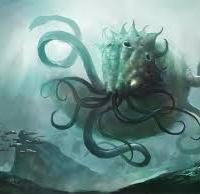

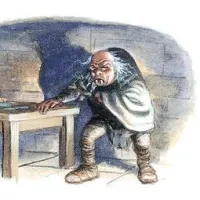


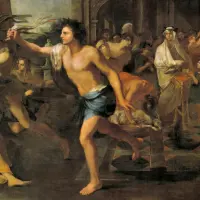
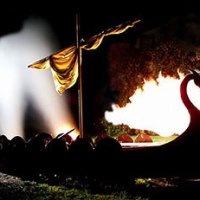



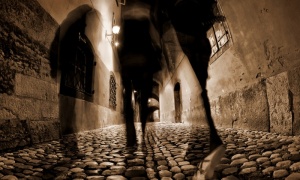


Thank you for sharing. I read a lot of horror but Onions I have not. 2020 reading for sure. Happy Holidays!